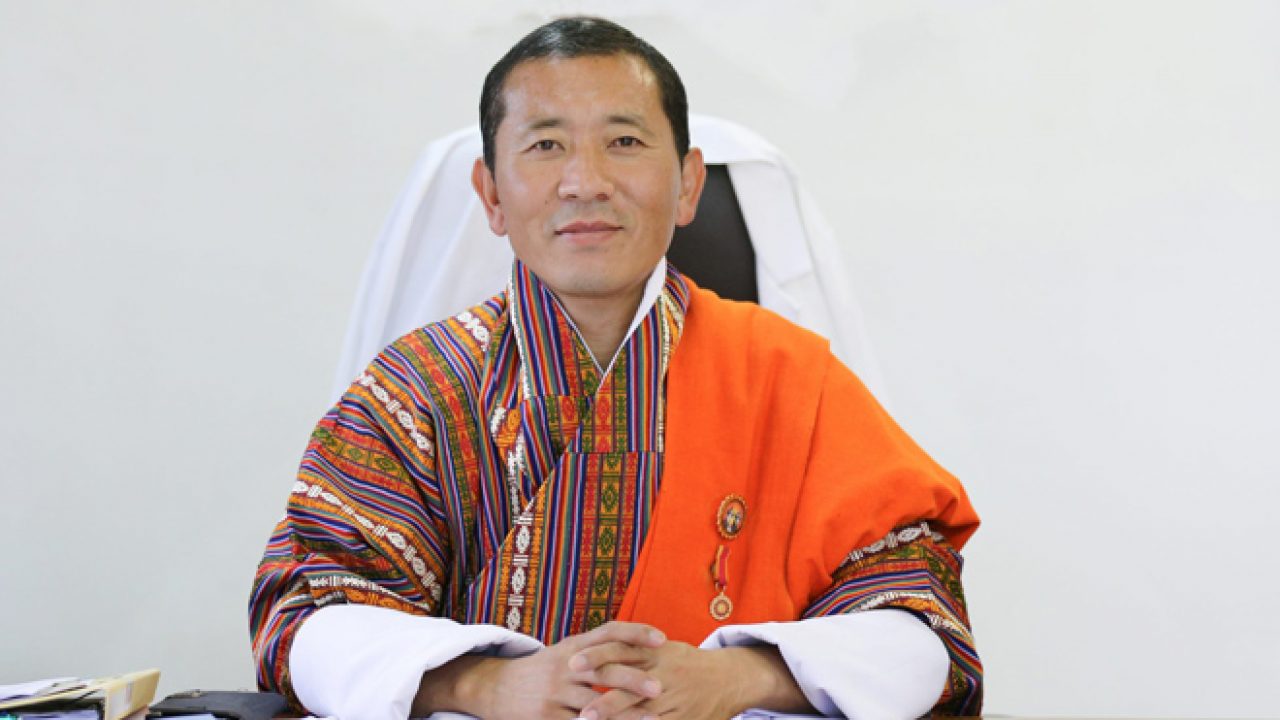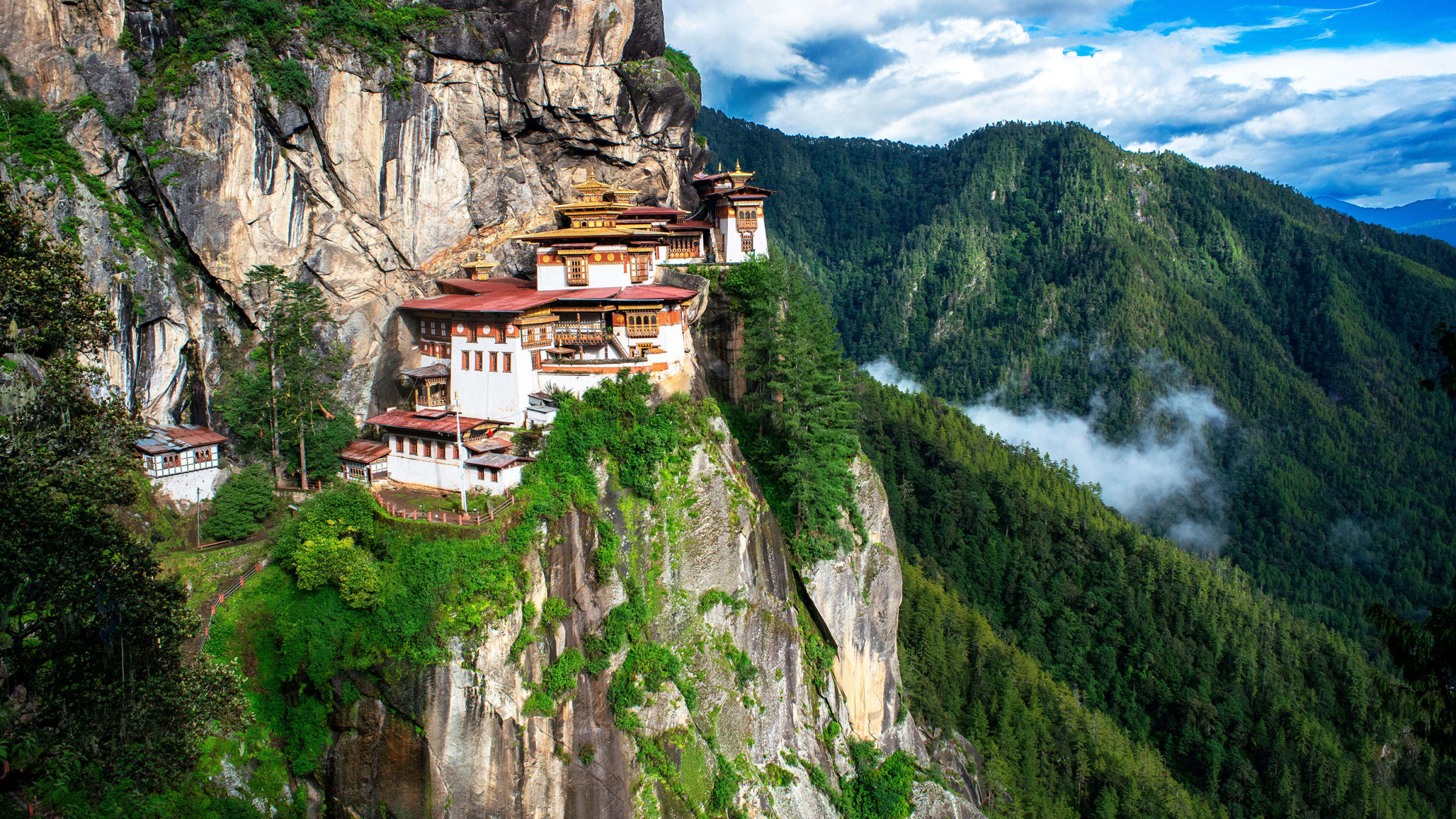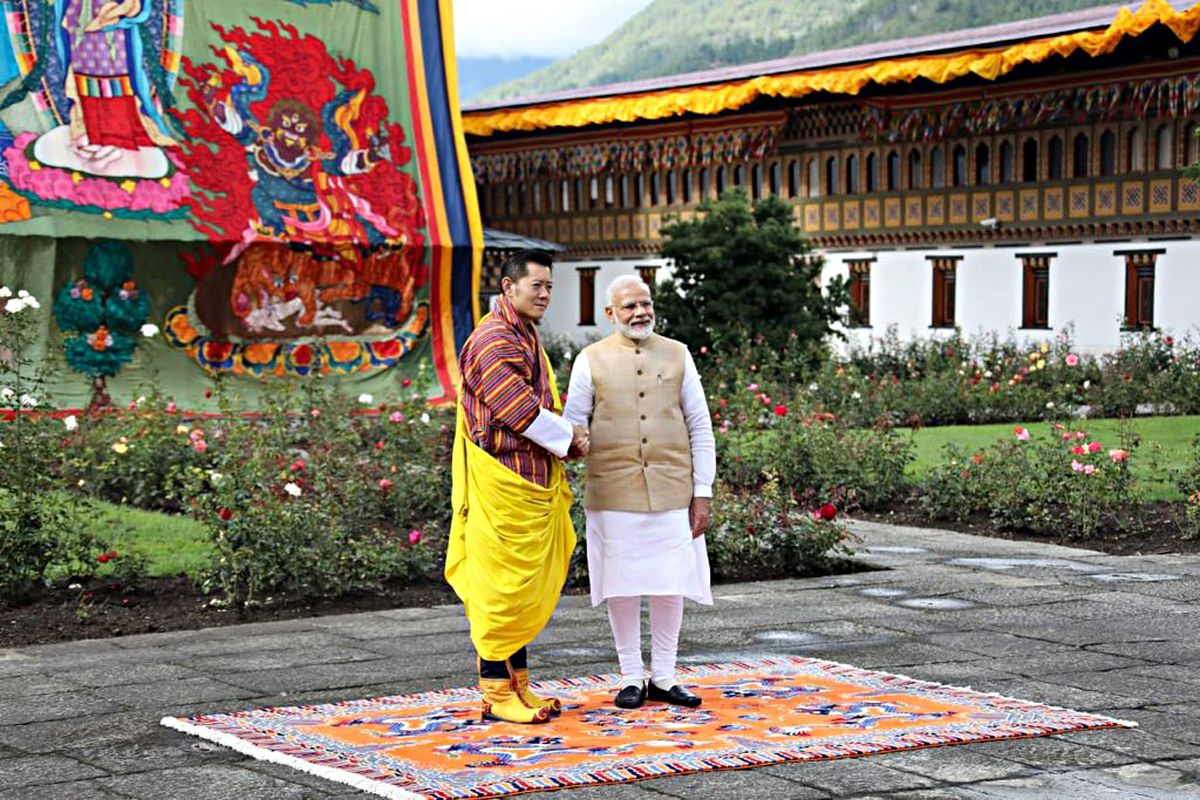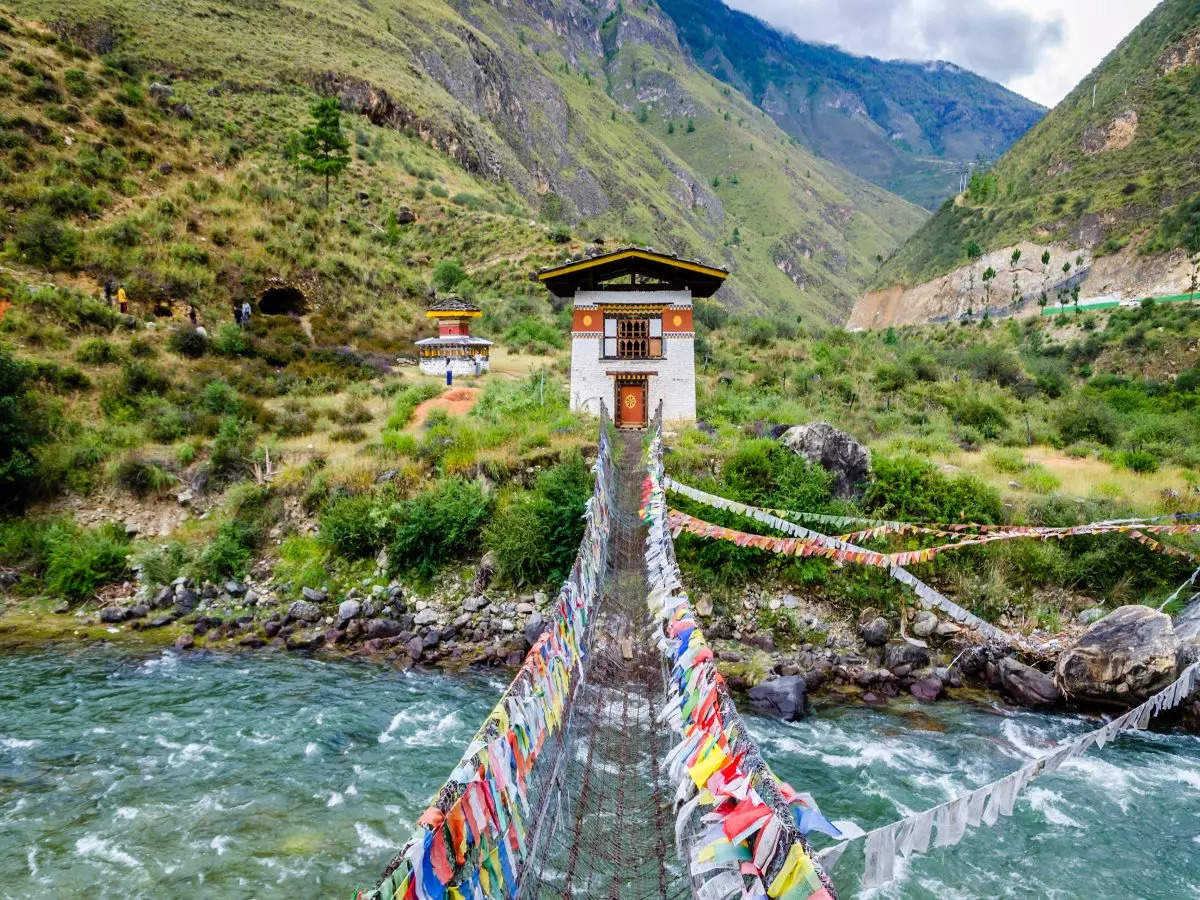Bhutan: Looking for a Slice of India’s Growth Pie in 2023

Bhutan: Looking for a Slice of India’s Growth Pie in 2023
Lotay Tshering, the prime minister of Bhutan, is prepared to provide investment incentives to multinational corporations with a presence in India provided they expand their operations there as well.

“We might be able to offer some unique advantages, maybe in terms of tax, maybe in terms of manpower, maybe in terms of specific skills,” said Tshering. “So that companies can have a chapter in Bhutan too.”
He acknowledged that Bhutan was welcoming to manufacturing clusters when asked. Yes, but not in the typical manner. We will never be able to mass manufacture; instead, we must concentrate on important, really useful, low-volume industries and manufacturing that will employ fewer but highly qualified workers, the expert said.
“This can mostly be in areas like digital and IT services, science, and technology,” he continued. He declared that his nation was prepared to investigate financial services as well.
India and China are two of the biggest manufacturers in the world, so trying to compete with them would be foolish. We need to identify a window that will benefit an investment or unit. Like, instance, significant tax advantages or other advantages of a like nature,” he stated.

Bhutan’s economy is heavily dependent on tourism, but since the epidemic, a steep sustainable development charge of $200 per person per day has been levied on international visitors, making it difficult for travellers to return to the mountainous nation. The Bhutanese government announced a 50% reduction in this cost on Friday night, bringing it down to $100 per passenger per day. Indian citizens must pay Rs 1,200 per day per person.
Tshering commented on trade with India by saying that because of the country’s emphasis on significant infrastructure improvements, there would always be a growing need for energy. India itself is making significant investments in hydropower and renewable energy, particularly solar energy. We will be able to contribute to India’s rapid infrastructure development by concentrating on solar and hydro as well.
Electricity is Bhutan’s biggest and most significant trade partner with India, with estimated imports of Rs 2,443 crore in 2021. commerce between India and Bhutan has increased by three times since 2014, from $484 million in 2014–15 to $1,422 million in 2021–22, or over 80% of Bhutan’s total commerce.

Tshering said that a train connection will be established “as soon as possible” between India and Bhutan. Five rail routes between the two nations were the subject of an MoU that was signed in 2005, but nothing has come of it so far. S. Jaishankar, the minister of external affairs, had earlier this month informed reporters that negotiations for a 57-kilometer rail link between Kohrajhar in Assam and Gelephu in Bhutan were ongoing.
“Yes, there have been a few team trips. Both Indian and American specialists came to see us. They have pinpointed the precise locations and the subsequent linkages. Everything has been planned. The Gelephu-Kokrajhar project seems to be moving forward really quickly. The area between the two locations has been inspected, and it is conceivable and practicable,” Tshering added.
When asked if there was a timetable, he responded, “Neither government has set a deadline for the calendar year, but experts have agreed that it has to be completed as quickly as feasible. According to press sources, the study was finished in April of this year, and completion of the train line is anticipated for 2026.
Regarding the additional linkages mentioned in 2005, he stated that some of them were impractical since the planned rails crossed through some privately owned territory, but added that other options were also being thought about. His office stated that Samste, Phuentsholing, and Samdrupjongkhar had the potential for train connections, and that the success of those connections hinged on more commerce with India and a stronger economy.

When asked if Bhutan has gained significantly from its geographic location given all the economic benefits it receives or whether it has suffered as a result of the border tensions, Tshering stated it was impossible to offer a clear yes or no answer.
“Of certainly, the Government of India’s goodwill gestures have been advantageous to and very beneficial to us. Our economy has been protected by one of the fastest expanding economies. Due to the fact that 85–90% of our commerce is with India, even when the global economy is in decline, we are able to stay up since it is a mirror image of India’s economy. We import practically all of our necessities from India, so it’s only fair, he said.
Despite the fact that it wasn’t created in India, we nevertheless import it. Therefore, we have incredibly, incredibly profited. China is our second-largest trading partner, but there is no trade on that magnitude with China. Additionally, the Chinese border is mainly covered in snow the whole year. However, the 750-kilometer border between India and Bhutan is porous in the south. So, we get a lot from it,” he continued.
He stated, “China and India have their disagreements. There are border tensions between the two countries. I completely leave it to them to decide why they disagree, what their disagreements are, and how to resolve them. Due to financial constraints, we refrain from taking sides. Nobody on our list of pals is someone we can afford to lose.

“We are south facing in everything traditionally, geographically, and economically,” he continued. In terms of cuisine, religion, and other things, Tibet, which is now part of China, has a significant effect on us. But West Bengal and Assam have also had a significant impact on us. There has been a long-standing partnership with the Indian government. How could someone forget to document this?
Will Bhutan thus keep looking south? “I believe I previously responded to it. In the end, it comes down to how each person will profit and the requirements of the nation. At the end of the day, all people are selfish,” he added.
In the midst of Southeast Asia’s bustling markets and rapid development, a small, landlocked nation is making quiet yet strategic moves. Bhutan, famously known for its Gross National Happiness index, is eyeing a share of India’s economic growth.
As India moves forward on its trajectory towards becoming a global economic powerhouse, Bhutan is keen to leverage its historically amicable relations and geographical proximity with its larger neighbor to spur its own development.
Bhutan and India share a rich history that extends beyond diplomatic ties. Protected by the Indian military and benefiting from Indian expertise in various developmental projects, Bhutan has been a beneficiary of India’s growth in more ways than one.

The Indo-Bhutan Friendship Treaty of 2007 further solidified this partnership, with both countries pledging non-interference in each other’s internal affairs and a commitment to mutual economic cooperation.
Bhutan holds significant strategic importance for India. Nestled between India and China, its geopolitical location serves as a buffer zone.
With China’s growing assertiveness in the region, maintaining a strong and prosperous Bhutan is in India’s geopolitical interests.
Conversely, India’s robust economy and regional influence can serve Bhutan’s aspirations for growth and international prominence.
Hydropower is Bhutan’s most significant export to India, accounting for up to 40% of its own revenue. Given India’s increasing energy demands, Bhutan aims to scale up its hydropower capacity and sell surplus energy to India. New projects and infrastructure upgrades are in the pipeline, and Bhutan is seeking both financial and technological assistance from India to expedite these plans.
Bhutan’s mesmerizing landscapes and unique culture attract a growing number of tourists each year. As the middle-class population in India booms, with an increasing appetite for travel and leisure, Bhutan sees an opportunity to promote itself as a prime tourist destination for Indian citizens.

Bhutan’s commitment to sustainability and organic farming has the potential to attract a niche market in India, where demand for organic produce is rising. Joint ventures in agriculture and agro-based industries could significantly boost Bhutan’s export revenue.
To successfully capitalize on these opportunities, Bhutan is focusing on several key areas:
- Ease of Doing Business : Bhutan is simplifying its regulations to attract Indian investment in various sectors, from infrastructure to IT.
- Trade Agreements : Both countries are working on a revised trade agreement that would give Bhutanese goods easier access to the vast Indian market.
- Educational and Skill Development : Various initiatives are in place to upskill Bhutan’s workforce, often in collaboration with Indian institutions, to meet the demands of a diversifying economy.
- Infrastructure Development : Upgrades to roads and railway links connecting the two countries are in progress to facilitate better trade and movement.
Despite the potential, there are some hurdles in the form of regulatory barriers, cultural differences, and mutual concerns about environmental conservation. Both nations will need to navigate these complexities carefully to establish a mutually beneficial economic relationship.

India’s economic rise presents not just challenges but also tremendous opportunities for its neighbors. Bhutan, with its unique blend of traditional wisdom and modern aspirations, is keenly eyeing a slice of India’s growth pie.
A successful partnership could serve as a model for how nations can leverage historical and cultural affinities to build a prosperous future. Given the synergies and the potential for mutual growth, the world will be watching how this under-the-radar partnership evolves in the years to come.




